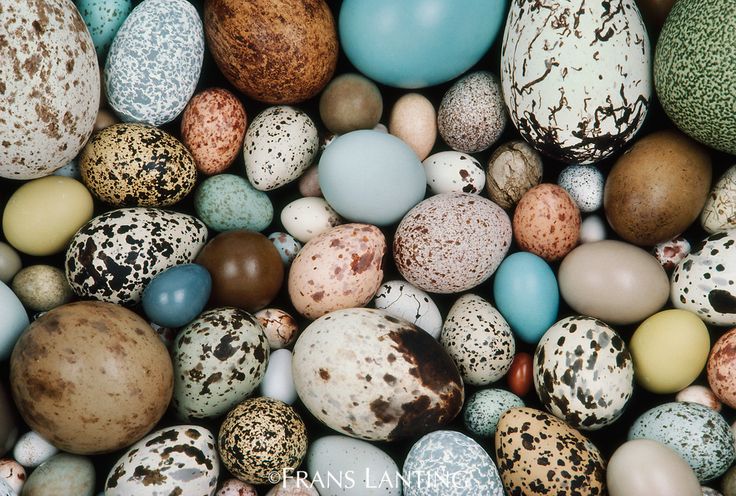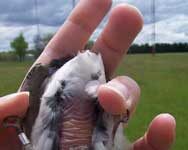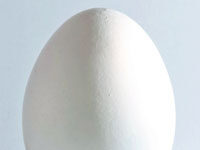
There are 10,000 species of birds worldwide. They inhabit every climate and continent. And they lay eggs which vary widely in color, shape and size. The egg is a life support system for the developing embryo. Here are some interesting facts about eggs:
- The smallest egg is laid by a Bee Hummingbird. The largest egg comes out of an ostrich.
- The internal temperature of a bird is about 104 degrees F – but they need to incubate their embryos at a lower temperature.
- Some birds can extract calcium from their bones, others need to get calcium from food sources.
- Birds can store sperm for 2 to 15 weeks after mating.
- The egg begins as a yolk. As it moves down the egg duct over a 24 hour period, albumin is added, which is then enclosed in a membrane. The shell, or protective armor, is added in the uterus. Specialized cells act as paint guns to add color.
- If you put an egg in vinegar, the shell will be dissolved in 24 hours.
- In chickens, the pounted egg turns around and they blunt end of the egg comes out first during laying. (A scientist figured this out by sticking a pencil up a chicken’s hole.) Other birds may lay the pointed end first.
- A featherless “brood patch” can regulate the flow of blood to control heat that is transferred to the egg. Some birds like the Great Tit can control the development of the embryo to time it for food supplies.
- Most birds lay one egg a day, although some lay an egg every other day.
- Incubation does not begin until the clutch is complete, or in some cases the day before, in order to have all the eggs hatch at about the same time.
- Hot temperatures may temporarily render male bluebirds infertile?
- The shell of an egg “breathes” through pores that take in oxygen for the embryo and expel carbon dioxide.
- Bacteria can infect an embryo through the pores in the egg shell, but the SAM (Shell Accessory Material) provides a microscopic protective layer that acts as the first line of defense against microbial attack.
- The albumin acts as a biological and physical barrier to infection, because it does not contain life sustaining nutrients, and also has over 100 anti-microbial proteins.
- The yolk provides nourishment to the embryo.
- As the embryo develops, it generates water vapor, which diffuses through the shell, creating a space for oxygen at the blunt end. This oxygen supply will eventually give the chick energy to break through the shell.
- The chick will have a hard space on its beak called an “egg tooth” which will enable it to break through (“Pip”) to the outside world. Obviously, the shell has to be breakable for the chick to exit. Pipping can take hours or days. Other chicks may cheep, which could encourage the other eggs to hatch synchronously.
- Coloring on eggs can provide camoflauge, prevent overheating, and offer defense.
- Some birds can recognize eggs laid by parasitic birds like the Cuckoo or Cowbird, but these birds also utilize egg mimicry to match the color or design on a host egg. Because birds have better vision than humans (including better perception of color) they may be able to detect the difference between patterns.
- Pointier eggs may be laid by birds that are better flyers, allowing them to have a more streamlined body plan.
REFERENCES AND MORE INFORMATION:
Noise proves nothing. Often a hen who has merely laid an egg cackles as if she laid an asteroid.
– Mark Twain
-
- Avian Reproduction: Clutch Size, Incubation and hatching, BIO 554/754
- Mating & Sperm Storage
- Widows/Widowers
- Dissection photo showing egg production in a House Sparrow
- Nest and Egg ID, Bios by Species
- Why didn’t the eggs hatch?
- I found an egg – can I incubate it?
- How many broods will a bluebird have in a season?
- When will the first egg be laid?
- Supplementing Calcium – Feeding Chicken Eggshells, etc. to Birds
- Beat the Heat (or Cold)
Noise proves nothing. Often a hen who has merely laid an egg cackles as if she laid an asteroid.
– Mark Twain



